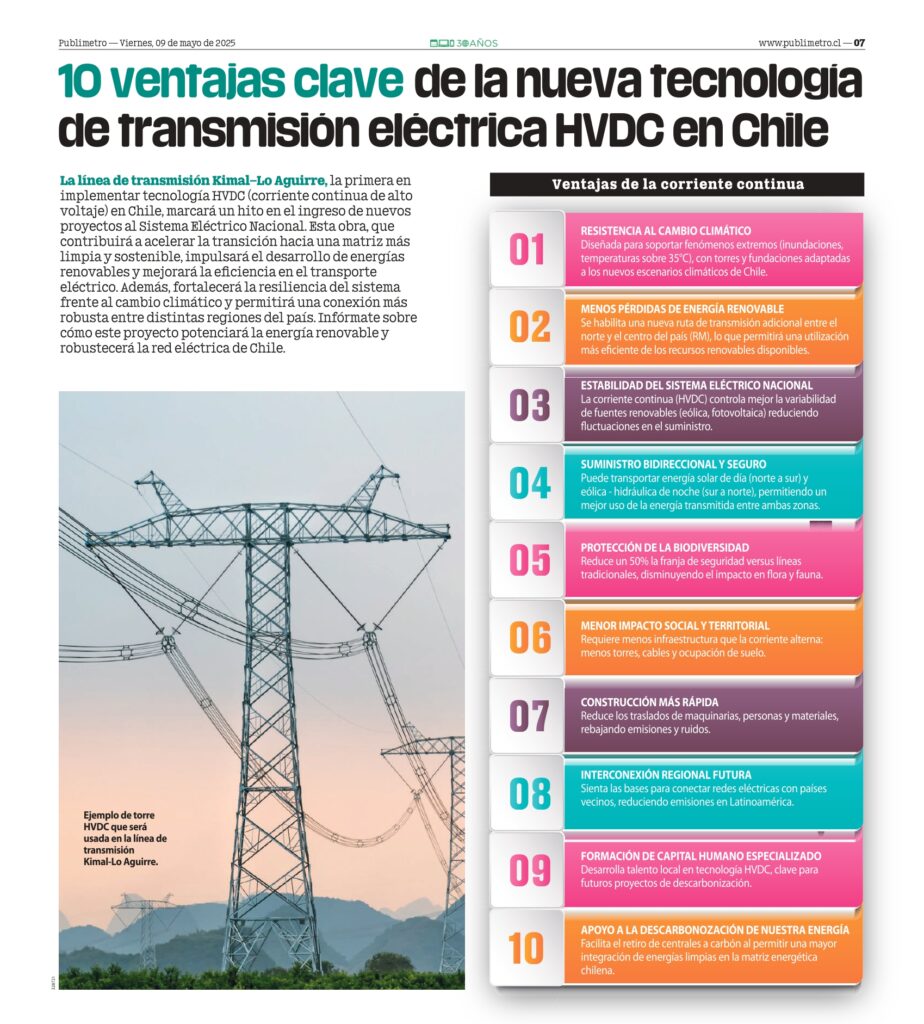The Kimal-Lo Aguirre transmission line, the first to implement HVDC (high voltage direct current) technology in Chile, will mark a milestone in the entry of new projects into the National Electric System. This work, which will contribute to accelerate the transition to a cleaner and more sustainable matrix, will promote the development of renewable energies and improve efficiency in electric transportation. It will also strengthen the system’s resilience in the face of climate change and enable a more robust connection between different regions of the country. Find out more about how this project will boost renewable energy and strengthen Chile’s power grid.
Advantages of direct current
1. CLIMATE CHANGE RESISTANCE
Designed to withstand extreme phenomena (floods, temperatures above 35°C), with towers and foundations adapted to Chile’s new climatic scenarios.
2. LESS RENEWABLE ENERGY LOSSES
A new additional transmission route is enabled between the north and the center of the country (RM), which will allow a more efficient use of available renewable resources.
3. STABILITY OF THE NATIONAL ELECTRICITY SYSTEM
Direct current (HVDC) better controls the variability of renewable sources (wind, photovoltaic) reducing fluctuations in supply.
4. BIDIRECTIONAL AND SAFE SUPPLY
It can transport solar energy during the day (north to south) and wind-hydro at night (south to north), allowing a better use of the energy transmitted between both zones.
5. BIODIVERSITY PROTECTION
Reduces by 50% the safety fringe versus traditional lines, reducing the impact on flora and fauna.
6. LESS SOCIAL AND TERRITORIAL IMPACT
It requires less infrastructure than alternating current: fewer towers, cables and land occupation.
7. FASTER CONSTRUCTION
Reduces the movement of machinery, people and materials, reducing emissions and noise.
8. FUTURE REGIONAL INTERCONNECTION
Lay the groundwork for connecting power grids with neighboring countries, reducing emissions in Latin America.
9. TRAINING OF SPECIALIZED HUMAN CAPITAL
Develops local talent in HVDC technology, key for future decarbonization projects.
10. SUPPORT FOR THE DECHARBONIZATION OF OUR ENERGY
Facilitates the retirement of coal-fired power plants by allowing a greater integration of clean energies in the Chilean energy matrix.
